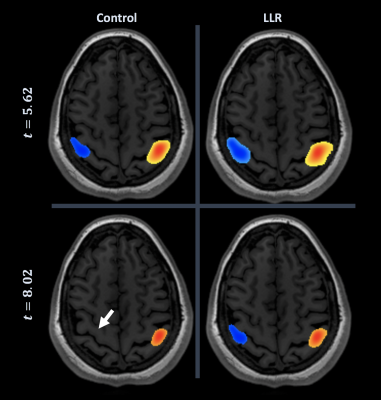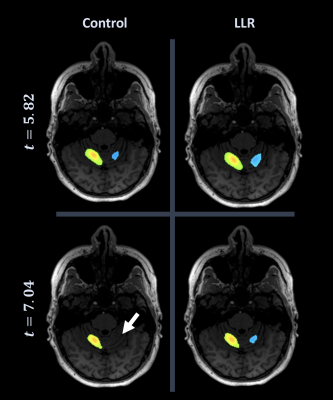Nolan Meyer1, Norbert G Campeau2, David F Black2, Kirk M Welker2, Erin Gray2, Daehun Kang2, MyungHo In2, John Huston2, Yunhong Shu2, Matt A Bernstein2, and Joshua D Trzasko2
1Mayo Clinic Graduate School of Biomedical Sciences, Rochester, MN, United States, 2Radiology, Mayo Clinic, Rochester, MN, United States
1Mayo Clinic Graduate School of Biomedical Sciences, Rochester, MN, United States, 2Radiology, Mayo Clinic, Rochester, MN, United States
In a preliminary evaluation of task-based motor fMRI data of five healthy subjects, locally low-rank denoising is evaluated for clinical performance. LLR predominantly yields increased thresholds for four specific cluster regions and aggregate maps.

Figure 2. Neuroradiologist consensus threshold of motor cortex for individual subject. At top left, control (conventional) activation map at consensus threshold; bottom right, LLR-denoised map at consensus threshold; bottom left, control at consensus threshold of denoised; top right, denoised at consensus threshold of control. LLR data are thresholded substantially higher with preservation of bilateral motor cortical activation, lost by control data at denoised threshold (white arrow).

Figure 1. Neuroradiologist consensus threshold of cerebellum for individual subject. At top left, control (conventional) activation map at consensus threshold; bottom right, LLR-denoised map at consensus threshold; bottom left, control at consensus threshold of denoised; top right, denoised at consensus threshold of control. LLR data are thresholded substantially higher with preservation of bilateral cerebellar activation, lost by control data at denoised threshold (white arrow).
